Al fronte. Cineoperatori e fotografi raccontano la Grande Guerra

Dal 30 January 2015 al 30 May 2015
Torino
Luogo: Museo Nazionale del Cinema
Indirizzo: via Montebello 20
Orari: da martedì a venerdì 9-20; sabato 9-23; domenica 9-20
Curatori: Roberta Basano, Sarah Pesenti Campagnoni
Enti promotori:
- Città di Torino
Costo del biglietto: intero € 10, ridotto € 8; studenti universitari fino a 26 anni, over 65, gruppi min. 15 persone, da 6 a 18 anni, gruppi scolastici € 3; gratuito fino a 5 anni, disabili e accompagnatore
Telefono per informazioni: +39 011 8138560/ 011 8138564
E-Mail info: info@museonazionaledelcinema.org
Sito ufficiale: http://www.museocinema.it
La mostra Al Fronte. Cineoperatori e fotografi raccontano la Grande Guerra propone un percorso di immagini attraverso 160 fotografie inedite, scattate da Luis Bogino al seguito del Regio Esercito Italiano e dai soldati fotoamatori dislocati sui territori di guerra. Accanto a questo primo tracciato si sviluppa il percorso cinematografico: una selezione di film “dal vero”, girati al fronte e nelle retrovie, e di titoli di fiction di epoche diverse, testimonianza di un'eredità visiva e culturale variamente interpretata nel corso del tempo. Lo sguardo di artisti come Paola De Pietri, Yervant Gianikian e Angela Ricci Lucchi propone infine una lettura personale della prima guerra mondiale, dei luoghi che essa ha attraversato e di una memoria spesso dimenticata.
Il Museo Nazionale del Cinema è inoltre partner del concorso per le scuole Al fronte e nelle retrovie, l'Italia nella Prima Guerra Mondiale, che invita gli studenti a raccontare, in maniera creativa e originale, l'Italia durante la Grande Guerra in tutte le sue realtà, sfruttando le potenzialità espressive offerte dalla sinergia dei diversi media e dall'utilizzo competente e consapevole delle risorse della rete.
I materiali prodotti verranno suddivisi per categorie e il Museo Nazionale del Cinema premierà le tre classi vincitrici (una per ogni grado di scuola) nella sezione 'video cortometraggi' con un sistema di archiviazione dati e contenuti, per la memorizzazione e lo streaming all'interno della scuola (per i vincitori della scuola primaria e secondaria di primo grado) e una rete WiFi studiata ad hoc, comprensiva di wireless controller, switch di rete e access point di ultima generazione (per i vincitori della scuola secondaria di secondo grado).
Il premio assegnato dal Museo Nazionale del Cinema è offerto dal partner tecnico NETGEAR
Per Al fronte. La Grande Guerra raccontata dai film, la trilogia della guerra di Yervant Gianikian e Angela Ricci-Lucchi
Cinema Massimo (Sala Tre), 30-31 gennaio 2015
In occasione della mostra Al fronte. Cineoperatori e fotografi raccontano la Grande Guerra (Mole Antonelliana 29 gennaio - 3 maggio), il Museo Nazionale del Cinema propone in due serate la “trilogia della guerra” realizzata tra il 1995 e il 2004 da Yervant Gianikian e Angela Ricci-Lucchi che allo studio della guerra e delle immagini che l’hanno rappresentata hanno dedicato buona parte della loro vita. Il primo appuntamento di venerdì 30 gennaio alle ore 20:30 prevede la proiezione di Prigionieri della guerra (1995). Il film sarà introdotto dagli autori. A seguire, alle ore 22:00, proiezione di Su tutte le vette è pace (1997). Sabato 31 gennaio alle ore 19:00 sarà quindi proiettato Oh! Uomo (2004).
Prigionieri della guerra
(Italia 1995, 60’, BetaSp, b/n)
Il film è composto da materiali cinematografici della Prima Guerra Mondiale, raccolti negli archivi dei grandi imperi che si fronteggiarono, in prevalenza quello zarista e quello austro-ungarico. Nel lavoro si contrappongono i “film-rapporto” militari sulle condizioni dei prigionieri di guerra, degli orfani, dei profughi (donne e bambini), e dei caduti di entrambe le parti. Eventi speculari registrati dalle “camere nemiche” ai margini delle battaglie.
Il film sarà introdotto da Yervant Gianikian e Angela Ricci-Lucchi
Ven 30, h. 20.30
Su tutte le vette è pace
(Italia 1999, 72’, BetaSP, b/n)
Il primo verso del Canto notturno del viandante di Goethe dà il titolo a questo film che è la naturale continuazione de Prigionieri della guerra. Anche questo è costruito su materiali d’archivio rinvenuti e studiati, disarticolati fotogramma per fotogramma, infine ricostruiti, rifilmati, virati.
Le immagini parlano da sole, belle e terribili, antiretoriche, speculari, riviste nei particolari più minuti, dove il paesaggio, l’uomo soldato, le sue cose, le sue armi, gli animali vengono ricondotti alla loro dimensione più vera: di fatica, sofferenza, eroismo povero e crudele.
Ven 30, h. 22.00
Oh! Uomo
(Italia 2004, 71’, BetaSp, b/n)
Cruda testimonianza del dopoguerra, passando dalle immagini del totalitarismo fascista alla fisicità individuale della sofferenza umana in un catalogo anatomico del corpo ferito. Sono le conseguenze del conflitto sull’infanzia nell’immediato dopoguerra, in un percorso che parte dalla decostruzione del corpo umano, alla sia ricomposizione artificiale. E’ stato realizzato utilizzando materiali storici depositati presso vari archivi italiani ed europei.
Sab 31 gennaio, h. 19.00
SCARICA IL COMUNICATO IN PDF

-
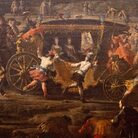 Dal 20 December 2025 al 20 April 2026
Caserta | Reggia di Caserta
Dal 20 December 2025 al 20 April 2026
Caserta | Reggia di Caserta
Regine: trame di cultura e diplomazia tra Napoli e l’Europa
-
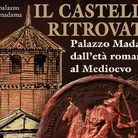 Dal 19 December 2025 al 23 March 2026
Torino | Palazzo Madama - Museo Civico d’Arte Antica
Dal 19 December 2025 al 23 March 2026
Torino | Palazzo Madama - Museo Civico d’Arte Antica
Il castello ritrovato. Palazzo Madama dall’età romana al medioevo
-
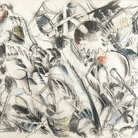 Dal 17 December 2025 al 19 January 2026
Roma | Palazzo della Cancelleria
Dal 17 December 2025 al 19 January 2026
Roma | Palazzo della Cancelleria
De Humana Mensura di Linda Karshan
-
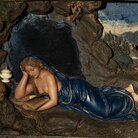 Dal 18 December 2025 al 12 April 2026
Firenze | Gallerie degli Uffizi
Dal 18 December 2025 al 12 April 2026
Firenze | Gallerie degli Uffizi
Cera una volta. Sculture dalle collezioni medicee
-
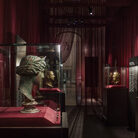 Dal 11 December 2025 al 9 April 2026
Firenze | Museo Archeologico Nazionale di Firenze
Dal 11 December 2025 al 9 April 2026
Firenze | Museo Archeologico Nazionale di Firenze
Icone di Potere e Bellezza
-
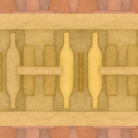 Dal 11 December 2025 al 11 January 2026
Roma | Palazzo Esposizioni Roma
Dal 11 December 2025 al 11 January 2026
Roma | Palazzo Esposizioni Roma
Giorgio Morandi nella Collezione Eni. Un viaggio attraverso la storia culturale del cane a sei zampe e l’eredità di Enrico Mattei


